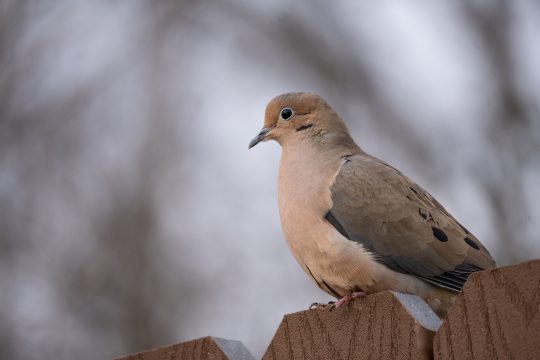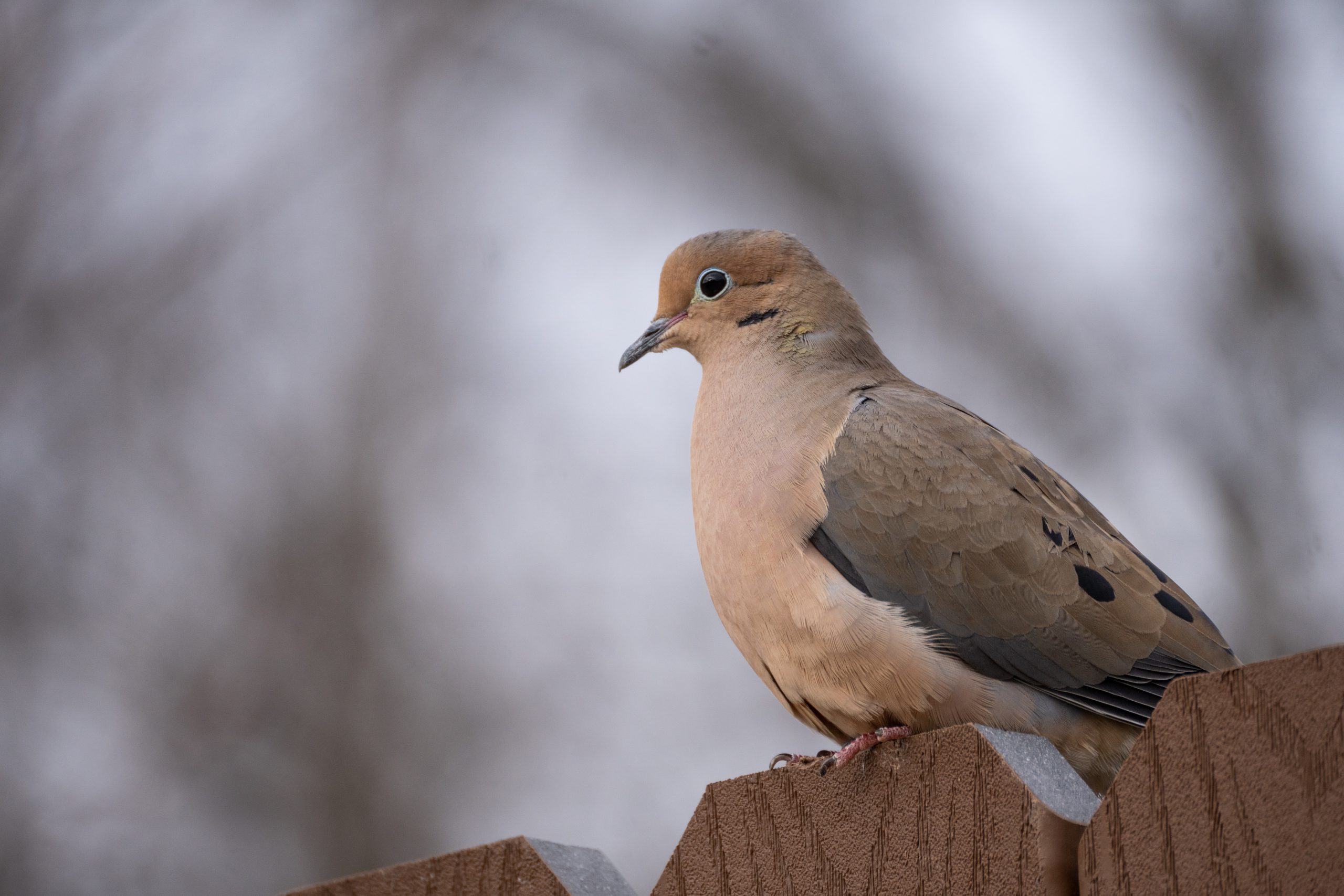Bird of the week: Mourning Dove
About: A small brown dove with long tail feathers. It feeds on the ground for seeds and perches frequently on power lines and trees in pairs or small flocks. When it takes flight, its wings make a low-pitched whistling sound.
Where to find this bird: In Slug Garden or in trees by the Fox River are good spots to find this bird. It can also be seen at bird feeders and on the ground, typically in semi-open areas.
When to find this bird: Year-round.
Fun fact: Mourning doves eat roughly 12–20 percent of their body weight every day — roughly 71 calories.

Ancient murrelets and a changing climate
While on break this winter, I was birding along the Oregon coast, scoping the ocean at one of my favorite sea-watching places. As the name suggests, scoping while sea-watching involves a lot of staring through a large scope at the waves, but seeing waves is not my hope; I’m hoping to come across some ocean-going birds. I will do this for hours, as it takes some time to start noticing all the tiny, far-away birds as they bob up and down in the large swells and disappear underwater at times to feed.
On this day, I lucked out and spotted an ancient murrelet, a small black-and-white bird about eight inches long and weighing eight ounces. It breeds in mounds and rocky crevices on northern Pacific islands of Alaska and Russia, and winters on the open ocean off of the Pacific Northwest, Japan and Korea.
However, as I was watching these tiny birds on the open Pacific Ocean, ancient murrelets were showing up across U.S. states, including in Wisconsin not far from the Lawrence campus. On Nov. 20, one showed up in Chequamegon Bay, and another spent Thanksgiving in Sturgeon Bay, just an hour-and-a-half drive from campus! Other birds showed up in Ontario, Minnesota, Idaho and even Tennessee.
This vagrancy in ancient murrelets is not unheard of — one spent part of June in Huelva, Spain, which is quite surprising since they do not occur anywhere in the Atlantic Ocean — but with a total of 10 inland records this fall, it’s quite notable.
You may be wondering how these little ocean-going birds are ending up thousands of miles away from their home. There are multiple factors that are likely making these birds show up in far-flung lakes, all of which are connected to a changing climate. In late September, a bomb cyclone crashed into the Pacific Northwest, the heart of ancient murrelets’ eastern Pacific wintering range, blowing many pelagic birds (a.k.a. birds that spend most of their time far at sea) inland. This was preceded by record warm ocean temperatures in the Pacific, which killed off cold water marine life and caused pelagic birds, like murrelets, to wander in search of food.
Another factor that may contribute to the inland wanderings of ancient murrelets is that, in September 2023, the Northwest Passage thawed, connecting the Pacific Ocean with Hudson Bay and the Atlantic Ocean and offering an almost continuous water route to the Great Lakes.
Seeing these cute little seabirds far from their natural homes is definitely exciting for bird watchers who can enjoy them without needing to travel to the vast Pacific Ocean, but it is not a good sign for these ocean-going birds, who end up far from their natural habitat.

